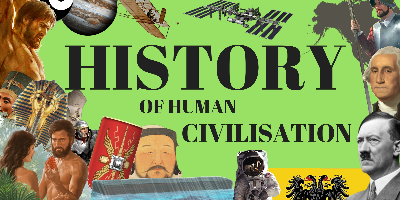Mongol Empire (1 янв 1206 г. – 1 янв 1368 г.)
Описание:
After becoming the "Universal Ruler", Genghis Khan set his sights on expanding his empire further. After easily subjugating the forest peoples of Siberia, he turned towards China, which at the time was split into three independent dynasties - the Song dynasty to the south, the Jin dynasty to the north, and in north-western China was the Xia. Genghis chose the Xia as his first target, and the dynasty fell under his control by 1209.Next was the largest Chinese dynasty, the Jin. The Mongols entered the country in 1211, and although successful in the beginning, the emperor and his forces proved to be stubborn enough to hold off full invasion for another seven years. While Genghis left forces to fight in Jin, he headed west and conquered various nomadic tribes that neighboured Mongolia. As he continued further west, he came upon the edges of the Islamic world as he encountered the Khwarezmian Empire - a Sunni Muslim group that occupied much of Iran, Turkmenistan, and Uzbekistan. Genghis offered the ruler a treaty of peace and trade, but after an attack on a Mongol caravan, the empire lasted only two years fighting the Mongols before being subjugated in 1221.
Next, the Mongol forces traveled around the Caspian Sea and subjugated the Kingdom of Georgia, before moving north into the Kievan Rus' as part of a reconnaissance campaign. By this time, the Rus' was a weak and fractured nation made up of various states ruled by princes. The Mongols fought an army made up of soldiers from a coalition of some of these states at the Battle of Kalka River in 1223. Although the victory went to the Mongols, they retreated from the Kievan Rus' and were called back to Mongolia.
After returning from the west in 1226, Genghis Khan was forced to attack China again due to the defeated Xia and Jin dynasties having formed a coalition to resist the Mongol Empire. The Xia were subjugated again within a year, and it was after this that the old and tired Genghis Khan died in the August of 1227. By his death, Genghis had amassed an empire of 8.3 million sq miles (21,500,000 sq km), double the size of the ancient Roman Empire and the Muslim empires at their height.
The expansion did not stop there, however, as Genghis' son Ogedei was elected the next leader. Ogedei immediately commissioned the construction of a permanent capital city in Mongolia, named the Karakorum. Then, he joined the allied Song dynasty and finally defeated the Jin in 1234. Military campaigns were also sent into the Korean Peninsula, but the Goryeo Kingdom there proved to be a formidable opponent, withstanding Mongol conquests attempted year after year. Despite their allying with southern China, the Mongols then attacked the Song dynasty from 1235 which began a four-decade-long war before the Song were eventually subjugated.
In the meantime, the Mongols once again turned west, finally conquering the Kievan Rus' in 1240; before subjugating many Eastern European kingdoms such as Poland, Hungary, and Austria. It is noted that during these battles in Europe, the Mongols used gunpowder weapons such as grenades and cannons. It is thought by most historians that the use of gunpowder was acquired from China, and that the Mongols were the first to introduce the explosive to Europe.
In 1241, Mongol forces began to withdraw from Europe after the death of Ogedei; as per tradition, each of the generals had to reconvene in Mongolia to elect a new leader. It took five years for a new leader to be chosen, and the result was Ogedei's son, Guyuk.
In the years following, Guyuk had to deal with various civil disputes throughout the empire, mostly concerning generals who did not support the leaders that had been elected, including Guyuk himself. This gradually caused cracks to appear in the Mongolian world and four distinct domains soon appeared. Unity was achieved briefly again when a new Khan, named Mongke, was elected in 1251, who made major administrative reforms across the empire. He also began new conquests, and by 1259, had subjugated land as far as Syria and even conquered the Abbasid Caliphate capital of Baghdad, bringing the Islamic Golden Age to an end. After his death, however, the four Mongol domains really began to divide and rule themselves, only giving lip service to the Great Khans that were elected. The four realms came to be divided as the Golden Horde in the north-west, the Chagatai Khanate in Central Asia, the Ilkhanate in the south-west, and the Yuan Dynasty in the east that ruled all of China and Tibet.
The Black Death also had a devastating effect on the Mongol empires. The Ilkhanate eventually fell to Persian warlords, and the introduction of the disease just confused the political landscape more, eventually dissolving Mon-gol rule so much that they left no real lasting effect on Iran. Similar events went down in the remaining three Mongol domains as the Black Death cut off commercial ties and disrupted the Mongol influence. The Golden Horde of north-east Europe lost many of its domains to countries like Poland and Lithuania; and over in China, various rebellions pushed back the Mongol Yuan dynasty ending their power there. The Mongol Empire had essentially all been dissolved by 1368, leaving just a few Khan-ruled states in Central Asia.
Добавлено на ленту времени:
Дата:
1 янв 1206 г.
1 янв 1368 г.
~ 162 years
